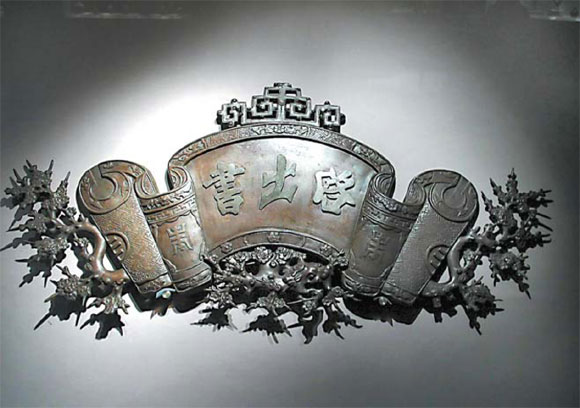An exhibition of bronzeware selected from the trove of Vietnam National History Museum unfolds a panoramic view of the evolution of bronzeware production dating from 2,500 years ago throughout the early 20th century in the country. Tools, weapons, daily utensils, sacrifice objects and decorations constitute the 211 exhibits, on display at the Capital Museum in Beijing, which come from the Vietnamese museum's collection of 130,000 cultural relics.

Vietnamese bronzeware distinctive features, as well as the aesthetic influence from neighbor countries. The production in recent eras further proves the vitality of the ancient technology and the advanced bronze-casting art.
A bronze drum with frog decoration dates back to fifth century BC. In the ancient times, the bronze drum symbolized wealth and power of a clan and its leader. It was used for ceremony, sacrifice and other significant activities. The exhibit on show is ornamented with four sculptural frogs at the upper top of the drum, accompanied by the pattern of elephant, fish and crab on the body. At the bottom, such farm-tools as steelyard, hammer and pliers circle around the drum on the base, expressing the meaning of prayer for harvest and happiness.
A bronze book, produced in the 19th century, transmits a blended flavor of ancient and contemporary bronzeware technique. Its design creates strong three-dimensional and elastic effect by means of the rolling-up modeling of the scroll. Branches and blossom of wintersweets attached to the scroll add vitality and modern scheme, while the inscription of ancient character on the book and tracery pattern on the top suggest traditional artistry.
Established in 1926 with its initial name as Louis Finot Museum in honor to the designer, the Vietnam National History Museum is located in the northern city of Hanoi. The latest exhibition acts as a cultural exchange between the two museums. After the 2008 Olympic Games, Beijing's Capital Museum will choose its precious collection for a Vietnam tour.
Story by Wu Liping, photo by Jiang Dong
Tips: 9am-5pm, until Feb 28. Capital Museum, 16 Fuxingmenwai Dajie, Xicheng District. 6337-0491/2. 首都博物馆, 西城区复兴门外大街16号
(China Daily February 23, 2008)